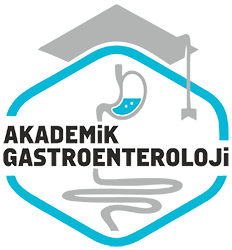Nisan 2008
Türkiye’de birinci basamak saglik kurumlarina basvuran hastalarda dispepsi görülme sıklığı
The frequency of dyspepsia in patients admitting to primary healt care centers in Turkey
- Ana Sayfa
- Sayılar
- Nisan 2008
- Türkiye’de birinci basamak saglik kurumlarina basvuran hastalarda dispepsi görülme sıklığı...
Türkiye Yüksek Ihtisas Hastanesi Gastroenteroloji Klinigi2, Ankara
Ankara Üniversitesi Tip Fakültesi, Gastroenteroloji Bilim Dali3, Ankara
Özet
Giriş ve Amaç: Dispepsi toplumda ve Sağlık kuruluslarina basvuran hastalarda sik rastlanan bir sikâyettir. Bu çalışma Türkiye’de birinci başamak Sağlık kuruluslarina basvuran hastalarda dispepsi sikligini saptamak ve epidemiyolojik özelliklerini belirlemek için yapilmıştır. Gereç ve Yöntem: çalışma Türkiye’nin 32 farkli ilindeki birinci başamak Sağlık kurulusuna basvuran olgular arasından rasgele seçilen 7520 olguda anket yapilarak gerçekleştirilmiştir. Anket birinci başamakta çalisan hekimler tarafindan yapilmıştır. Hastalar başvurudaki ana yakinmalarina göre gastrointestinal sistem ve gastrointestinal sistem dışı olmak üzere iki guruba ayrıldıktan sonra, her iki gurup içinden rasgele seçilen 2203 olguya anket yapilarak birinci başamaktaki dispepsi prevalansi arastirilmıştır. Dispepsi tanısı Roma-II kriterlerine göre konulmustur. Bulgular: çalışmaya katilan 7520 hastanın 2157’si (%31,5) GIS semptomları ile doktora başvururken, 5363’ü (%68,5) Gastrointestinal Sistem dışı yakinmalar ile doktora basvurmustur. Gastrointestinal Sistem yakinmalari ile basvuran 2157 hasta arasından rasgele seçilerek anket yapılan 1461 olgunun 760’inda (%52), Gastrointestinal Sistem dışı yakinmalar ile basvuran 5363 olgu arasından rasgele anket yapılan 742 olgunun 210’unda (%28,3) dispepsi tanısı konulmustur. Dispepsi prevalansi %44 olarak bulunmustur. Hastaların çogu kadın olup ( %68,1), yaş ortalaması 45±14 yıldir. En sık semptomlar siskinlik (%75,7), midede dolgunluk (%61,2), midede rahatsizlik hissi (%57), mide agrisi (%50), bulanti (%34,8), erken doyma (%26,5) ve kusmadir (%13,2). Hastaların %27,7’si yakinmalarin yemek ile arttığıni bildirmislerdir. Baharat sikâyetleri artiran yiyeceklerin basinda gelmektedir. Çay (p=0.0001) ve sigara içme (p=0.001) ile dispepsi arasında istatistiksel olarak anlamli bir ilişki bulunmustur. Hastaların %6’sinda ailede mide kanseri hikâyesi tespit edilmıştır. Tedavi için En sık (%56,7) antiasitlerin kullanılmakta olduğu görülmüstür. Sonuç: Türkiye’de birinci başamak Sağlık kurulusuna basvuran Hastaların önemli bir bölümünü dispepsi hastalari olusturmaktadır. En önemli semptomlar ise siskinlik ve dolgunluktur.
Abstract
Background and Aim: Dyspepsia is a common compliant among people in the general population as well as individuals attending to health care centers. This study was conducted to determine the frequency and epidemiologic features of dyspepsia in patients admitting to primary care centers in Turkey. Material and Method: The study was carried out by applying questionnaire in a population of 7520 patients who were randomly selected among those admitted to primary care centers in 32 different cities of Turkey. The questionnaire was applied by doctors working in the primary care centers. Patients were categorized into two groups (gastrointestinal system or not) depending on the main symptoms on admission. The prevalence of dyspepsia was investigated by applying questionnaire to a total of 2203 randomly selected patients from both of the groups. The diagnosis of dyspepsia was based on the Rome-II criteria. Results: Among the 7520 patients participating in the study, 2157 (31.5%) were admitted with gastrointestinal system symptoms and 5363 (41%) with non-gastrointestinal system symptoms. Out of 2157 patients with gastrointestinal system symptoms, questionnaire was performed in randomly selected 1461 patients and a diagnosis of dyspepsia was reached in 760 (52%). Out of 5363 patients with nongastrointestinal system symptoms, questionnaire was performed in randomly selected 742 patients and a diagnosis of dyspepsia was reached in 210 (28.3%). The prevalence of dyspepsia was 44% in the whole group. Most of the patients were female (68.1%) and the mean age was 45?14 years. The most frequent symptoms were bloating (75.7%), fullness (61.2%), epigastric discomfort (57%), epigastric pain (50%), nausea (34.8%), early satiety (26.5%) and vomitting (13.2%). Symptoms were precipitated by meals in 27.7% of the patients. Spices was the leading food precipitating symptoms. There was a statistically significant relationship between dyspepsia and smoking (p=0.001) and tea consumption (p=0.0001). Six percent of the patients had a family history of gastric cancer. Antiacids were the most common (56.7%) medications used for treatment. Conclusion: Dyspeptic patients constitute a considerable part of patients admitting to primary health care centers in Turkey. The most frequent symptoms are bloating and fullness.



